Tucked behind a red velvet rope in an inky side room off the main lobby, Le Bristol After Dark is delightfully unexpected – as if stumbling into a secret speakeasy in a palace. The nightclub stands in stark contrast to the famed 100-year-old hotel entrance – a grand space with ornate chandeliers, plush fringed couches and a painting of Marie Antoinette. In comparison, the club is lit with pink-and-purple neon lights, disco balls shining overhead. Partygoers sip Ruinart champagne and DJs spin disco and lounge tracks until the early hours of the morning.
The perfect balance of tradition and trend is what allows Le Bristol to maintain its reputation as one of Paris’s most legendary hotels. Set in an historic building and a hop away from Parisian icons such as Palais Garnier and the Tuileries Garden, the iconic property has hosted everyone from Coco Chanel to Elsa Schiaparelli and Salvador Dalí. Now celebrating its centennial, Monocle meets president and managing director Luca Allegri to discuss how the hotel maintains its relevance in an ever-evolving hospitality landscape.
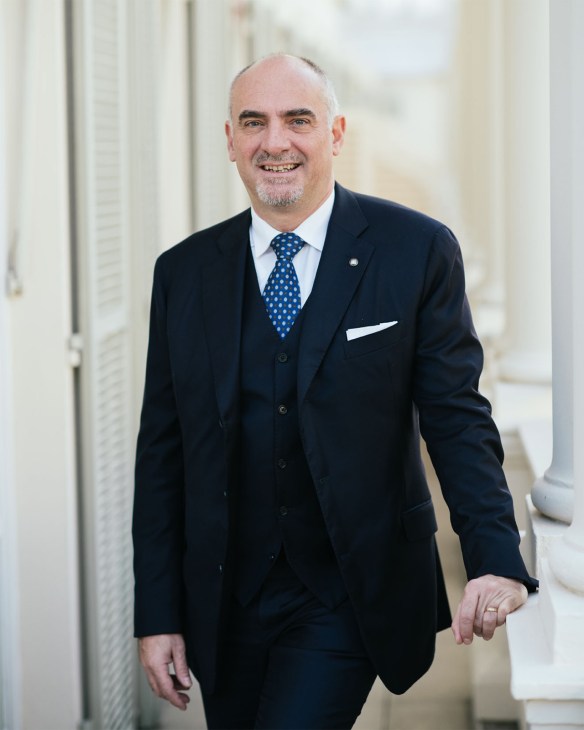
100 years of business is no easy feat. How do you stay timeless in a world that’s moving so quickly?
We try to surprise our guests with new ideas – art, for example. [American contemporary artist] George Condo, a longtime guest, collaborated with us on the renovation of the Imperial Suite. We asked whether he could leave a small piece of art with us when the suite was ready. We have also hosted a pop-up with Gabriela Hearst, who has been staying with us since she was at Chloé. When she launched her own brand [10 years ago], we began a partnership with a retail installation. [Now, a decade later, another pop-up has been launched in a space created by Benji Gavron and Antoine Dumas of Gavron Dumas Studio.]
There are some clients who only come to the hotel for Le Bristol After Dark. [The club] is a way for us to show that, while we have been around for a century, we are also contemporary.
How do you maintain a strong heritage aesthetic while always offering something new?
The owners are heavily involved in decorating the hotel, which allows them to preserve its DNA while bringing some novel elements to the style. We are very privileged to have plenty of space, which has enabled us to increase the number of junior suites and bathrooms (two per suite). After speaking to our clients, we learned that this was what they wanted the most.
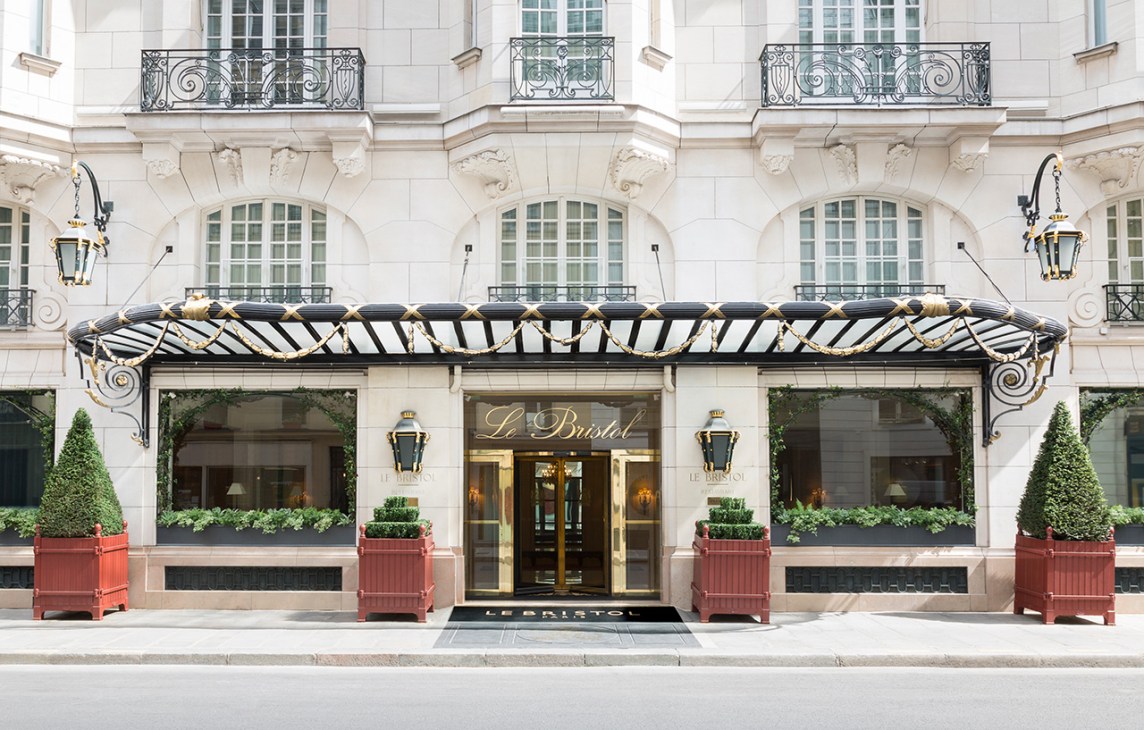
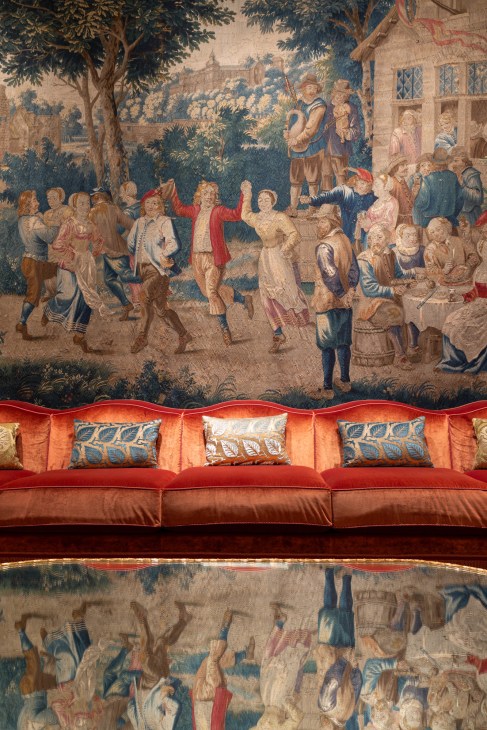
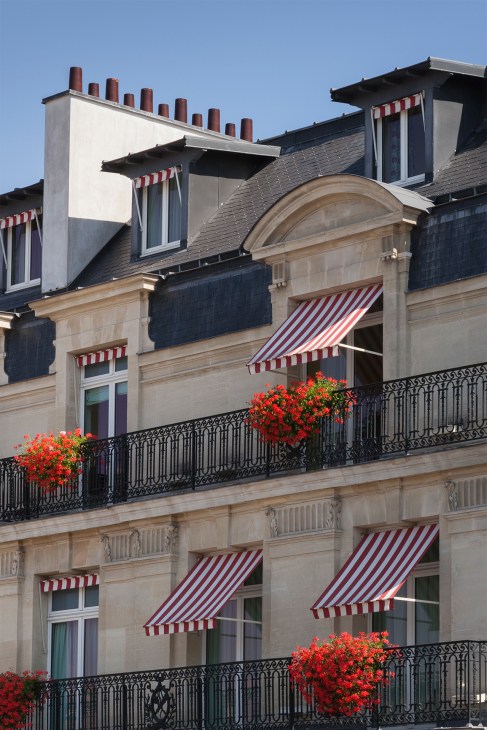
What kind of experience do you want to create for your guests?
A distinctly Parisian one. We are located in the heart of a neighbourhood with the most popular galleries and attractions in Paris, so we also attract the city’s residents with our food-and-beverage offerings. We have launched our own in-house bakery with a mill in the basement, where we produce our own flour for bread. We now have a chocolate factory, pasta-making facilities and a cellar too, [which is] likely the largest wine cellar of all the Parisian palace hotels. It’s about giving guests a unique experience with a level of personalisation that they won’t find elsewhere.
We want to give our visitors an incredible experience not only in Paris but throughout the rest of France as well. I’m the son of a concierge, so I understand firsthand how crucial this role can be. Interacting with clients and creating meaningful moments are the most important aspects of our jobs. On Wednesday afternoons, we host cocktail parties where we invite some of our frequent guests to meet different team members, such as the concierge, the guest relations or the rooms divisions [managers]. They mingle and meet other clients too – sometimes they even become friends.
How are you managing your staff and their experiences in a way that might differ to other notable hotels?
Leading by example is very important. We have members of staff that have been with us for 30 to 40 years. When employees reach a milestone – such as 20 or 30 years of service – we invite them to celebrate by bringing their family to the hotel or organising a party. We’re a family-run business, so we like to give [the staff] a sense of belonging and community. Le Bristol is not just a hotel or home for the owners – it’s also a home for the staff.
How have you adapted to changes in guest preferences to ensure the hotel’s continued relevance?
Some 30 to 35 per cent of our clients are returning guests and we want to show them that their future stays are as important as their past stays. For example, we have a family from New York that has been staying in the same suite for the past 25 years. To show them how much we appreciate their loyalty, we approached them during the renovation of the suite to share the plans with them. We then designed the layout of the room together and they changed the placement of the bed. For us, adapting is a way of honouring such loyalty.
If you’ve ever strolled through Paris’s public gardens, you may well have stopped to take a seat on its outdoor furniture: green chairs and loungers scattered around fountains and flower beds. Any time the sun comes out, residents and tourists quickly take to the park, where patio furniture is arranged around a table for a group picnic or under a tree for a quiet nap in the shade. On a sunny day it can be difficult to find a free seat – they’re all taken by sunbathers.
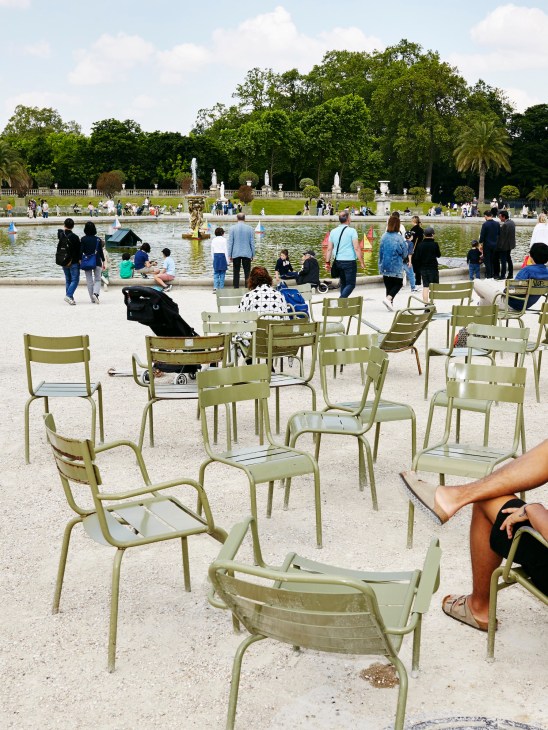
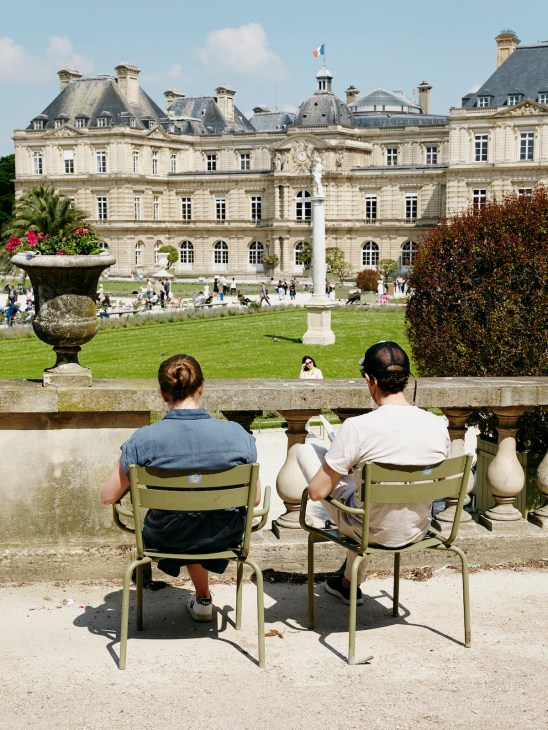
Along with the Wallace drinking fountains, the rattan chairs lining café terraces or the iconic dark-green kiosks commissioned by Baron Haussmann in the mid-19th century, the chairs found in Parisian parks and gardens have become a symbol of the city. The sturdy, stylish outdoor furniture, which subliminally transmits a sense of Paris to millions of visitors, comes from a few trusted companies. One of the biggest suppliers is French manufacturer Fermob, whose chairs can be found in the Luxembourg Gardens, as well as on café terraces, squares and the banks of the Seine.
The idea to add lounge chairs to the Luxembourg Gardens was first proposed in 1843 by the French senate, which is housed in the Luxembourg Palace and still owns the green space and its tennis courts. It took until the 1920s for the first collection of chairs, made by the craftspeople at city hall’s Ateliers de la Ville de Paris, to arrive. In the 1990s, Fermob won a competition to produce a modern version and, in 2004, the company called on French designer Frédéric Sofia to redesign the seats in aluminium, making them lighter, more comfortable and easily collected and stacked.
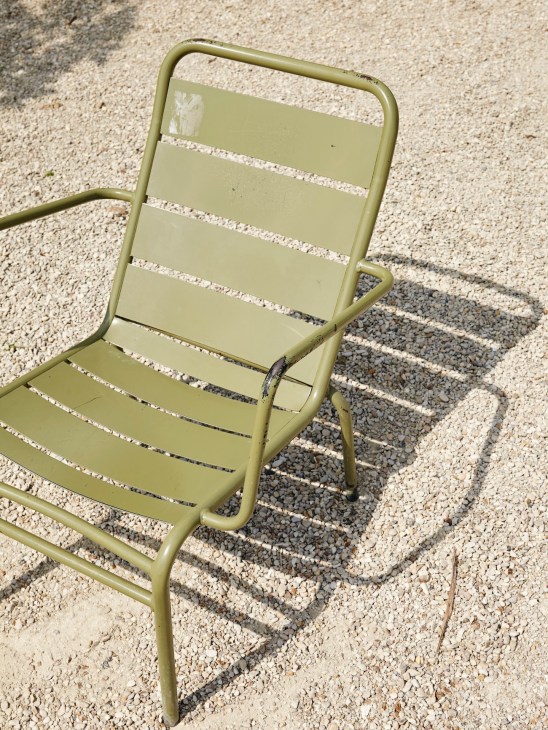

The resulting sage-green “Luxembourg” collection (originally named Sénat) has since become synonymous with the Parisian park. “Our furniture creates a sense of connection,” says Fermob’s chairman, Bernard Reybier. “It’s recognisable and part of daily life and makes people feel that they are in a very Parisian setting. The idea is that you are part of the history of the city.”
Founded in 1890 in Thoissey by a family of blacksmiths, Fermob takes its name from the words fer (“iron”) and mobilier (“furniture”). It remained a small workshop until it was acquired in 1989 by Reybier, who oversaw the growth of the company and expanded its appeal by collaborating with designers such as Pascal Mourgue, Andrée Putman and Matali Crasset. Today the business has expanded greatly but all of its manufacturing still takes place in the Ain region north of Lyon.
Despite its production beyond the city, Fermob’s relationship will always be close with Paris – and it’s continuing to evolve. Last year the firm began furnishing another Parisian landmark, the Champs-Elysées, as part of a project to transform the avenue into a pedestrian-friendly garden by 2030. The Committee for the Champs-Élysées asked Fermob, along with other bistro-furniture manufacturers, to design a new chair for its café and restaurant terraces. “What people like best is a product that has both a good design and a history to go with it,” says Reybier. “The Champs-Élysées is a new story and we will see where it takes us. Maybe it will also become representative of the Parisian identity.”
Click here to enjoy Monocle’s full city guide to Paris
1.
Pulso Hotel
São Paulo
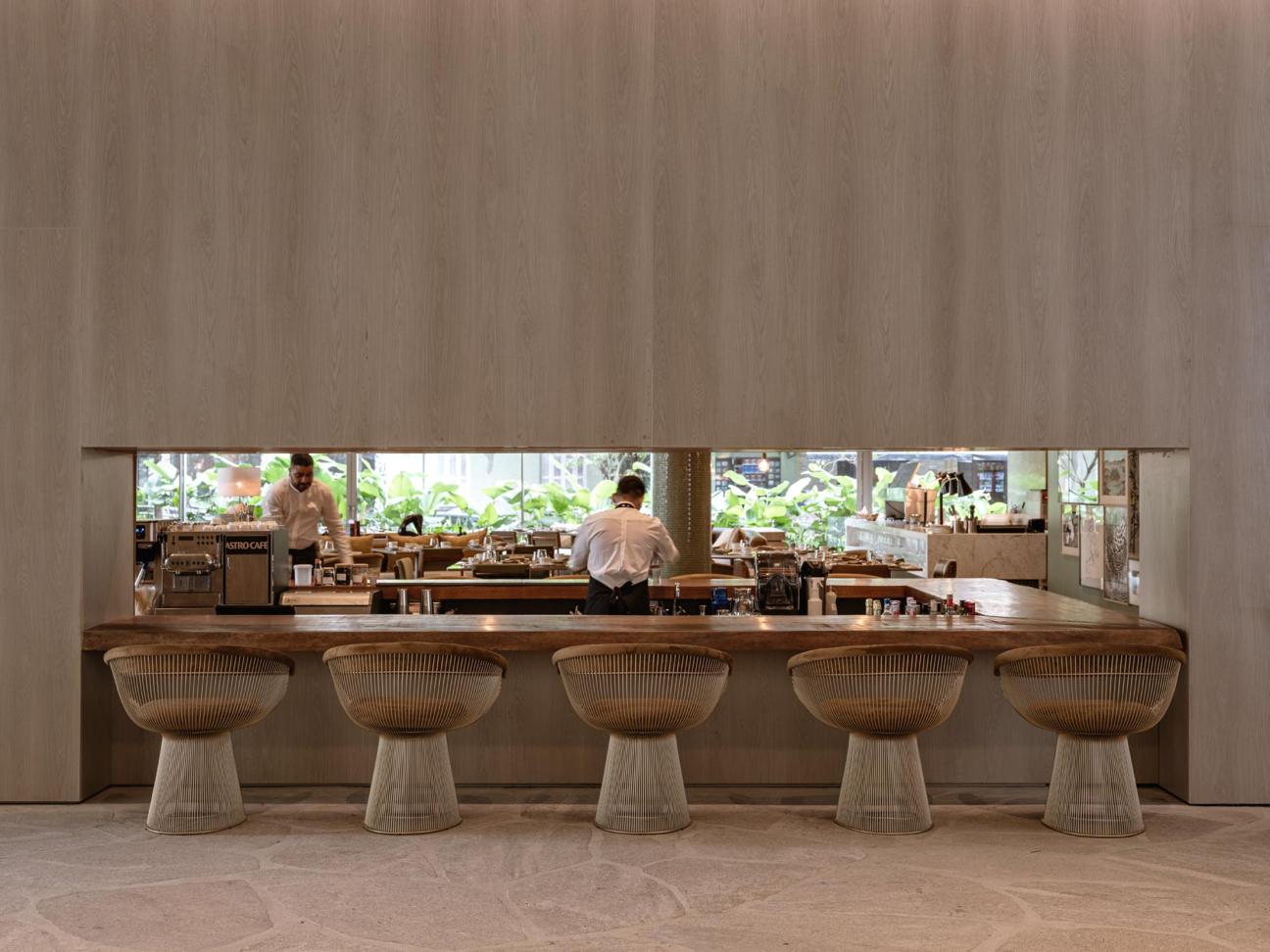

São Paulo, Brazil’s most sprawling metropolis, is the heartbeat of the nation – which is why Otávio Suriani decided to name his latest hotel in the city Pulso. “It’s a word that’s linked to music and movement, both things that we want to bring to the hotel,” he says. Designed by architect Arthur Casas, Pulso sits on the border between the Faria Lima financial district and the buzzy Pinheiros district. It offers 52 apartments and five suites, all dressed in elegant neutral tones. “Casas designed the entire complex, from the façade to the small details on the lamps,” says Suriani.
Pulso pays tribute to two of the city’s biggest strengths: nightlife and food. Chef Charlô Whately oversees the hotel’s Restaurante Charlô and Boulangerie Cha Cha, the latter of which is part bakery, part deli. “This is a city that never sleeps,” says Suriani. “Our nightlife is crazy.” You can experience it for yourself at Pulso’s Bar Sarau, which is always ready to welcome those craving a nightcap and some intoxicating bossa nova.
pulsohotel.com
2.
Yoruya
Kurashiki
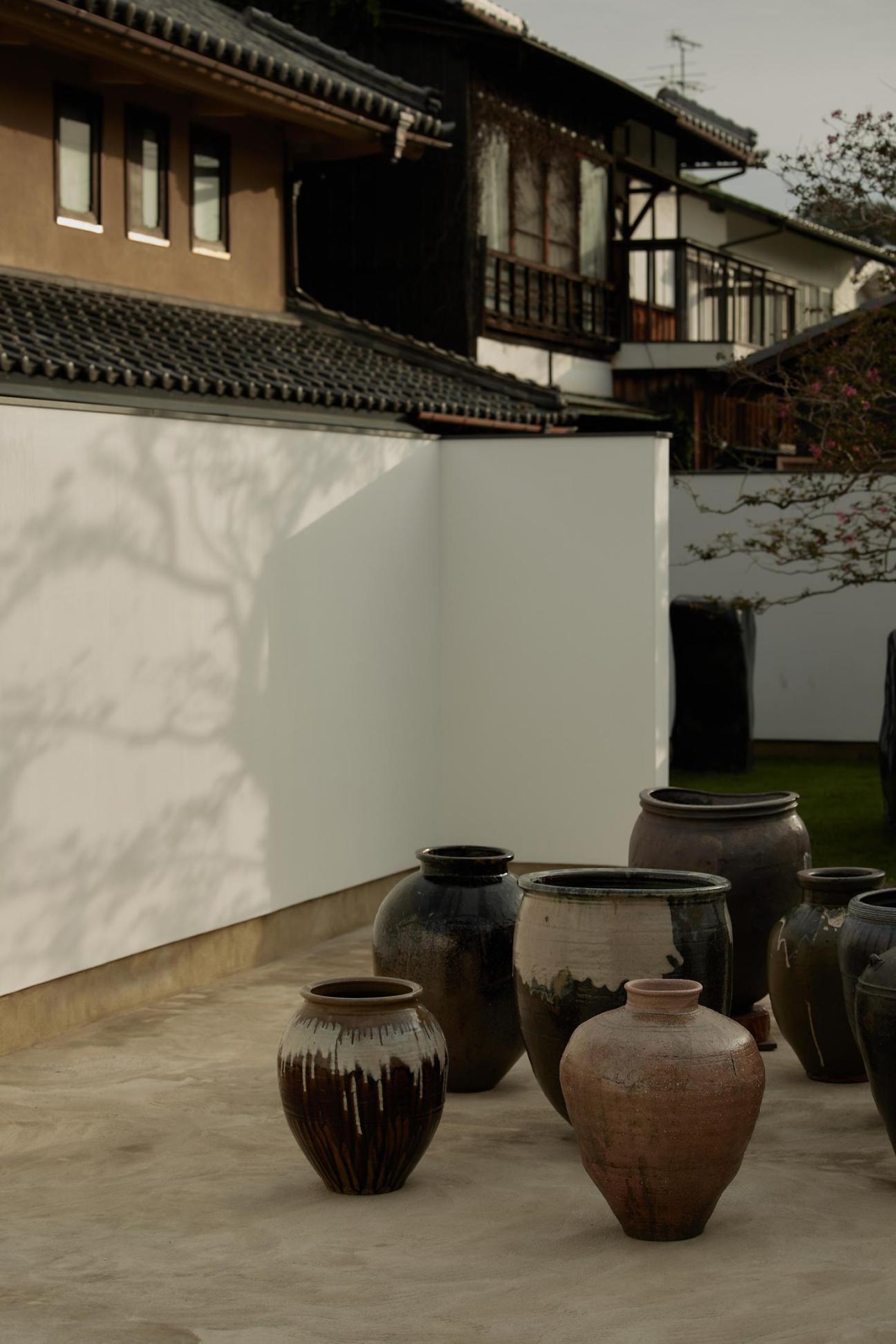
The city of Kurashiki in western Japan has long attracted enthusiasts of folk arts and crafts – it’s home to the Kurashiki Mingeikan, a museum dedicated to the subject – but it also has plenty to offer for those with more contemporary tastes. Fans of modernism will want to visit the Kurashiki City Art Museum, designed by Kenzo Tange, one of Japan’s great postwar architects. Day trippers, meanwhile, come to see the old buildings and tree-lined waterways. Until recently, however, anyone wanting to stay overnight would have struggled to find accommodation to match the surroundings. Now they have somewhere that fits the bill: Yoruya, a 13-room inn in a sensitively converted and extended former kimono merchant’s residence.
The century-old building’s original exterior has been retained, with a simple lantern above the door. Inside, the layout has been designed to mimic the traditional narrow streets known as hiyasai that are a distinctive feature of Kurashiki’s historic centre. Tokyo-based studio Simplicity has brought its signature modern craft style to the interiors – think white plastered walls, well-chosen Japanese prints and art books. The rooms couldn’t be more serene, with low mattresses, cotton pyjamas and baths that are open to the elements.
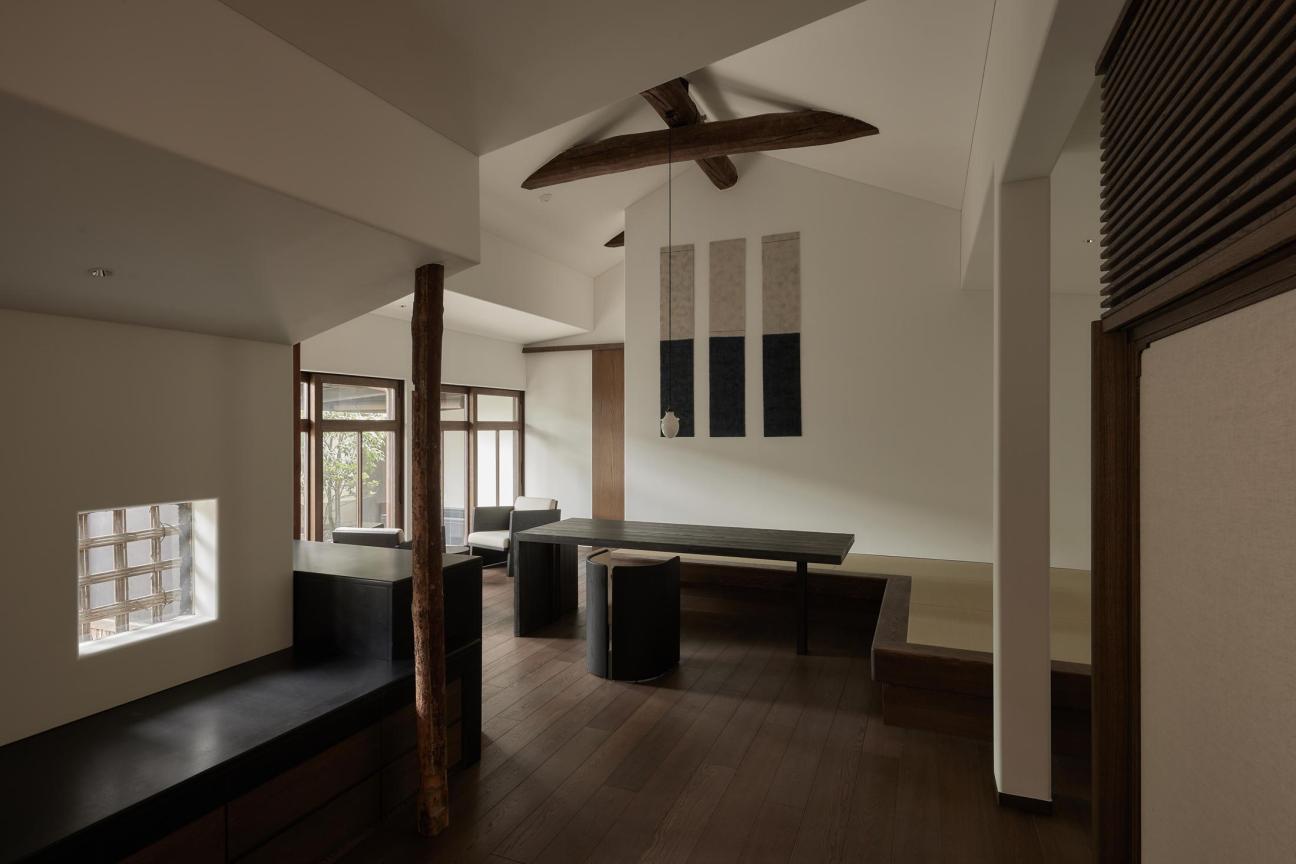
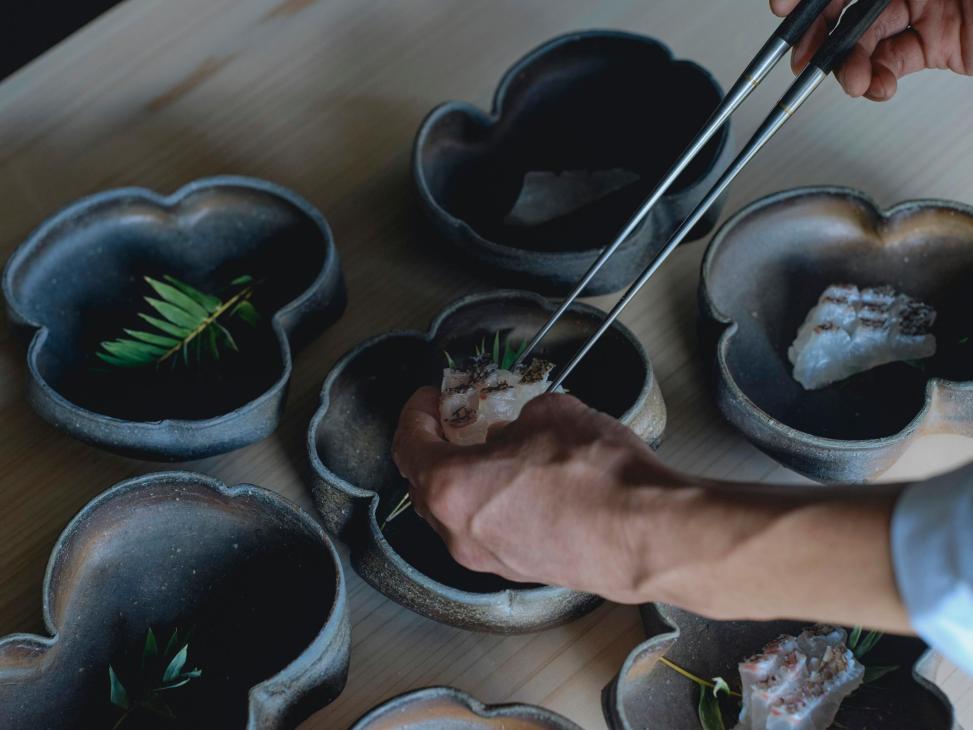
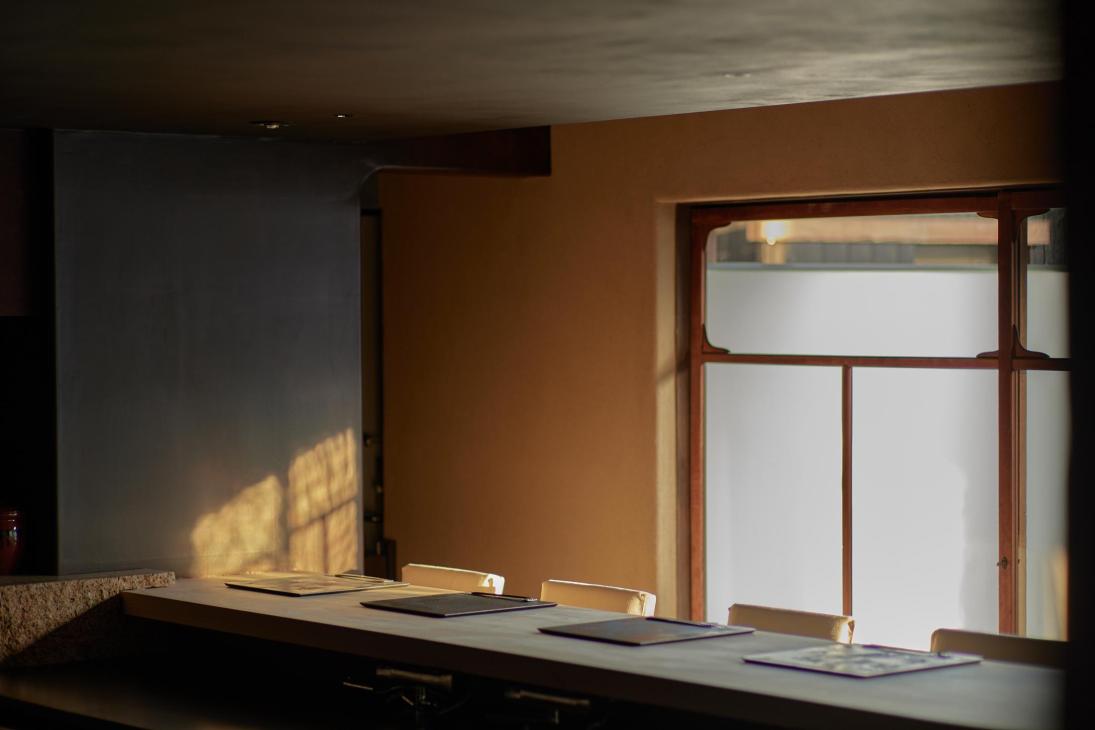
The operations team, Naru Developments, is led by hoteliers Yuta Oka and Fumitomo Hayase. They’ll be familiar to anyone who has stayed at Tokyo’s Hotel K5 or Onomichi’s Azumi Setoda. Dinner in Yoruya’s counter restaurant centres on local produce: chef Fumio Niimi prepares an omakase dinner that features such delicacies as clam cooked in a whole yuzu fruit and Okayama Nagi beef. Yoruya’s invitingly low-lit bar is open to non-residents; it’s well worth stopping in for a glass of wine or a local saké. Breakfast, best taken in the garden with its flowering crepe myrtle tree, is another treat. Expect fresh sesame tofu, grilled mamakari sardines (a regional speciality) and the chef’s homemade Japanese grape jelly. It’s a perfect start to the day before you hit Kurashiki’s streets to explore the city’s many cultural and historic delights.
yoruya-kurashiki.com
3.
Hôtel Dalila
Paris
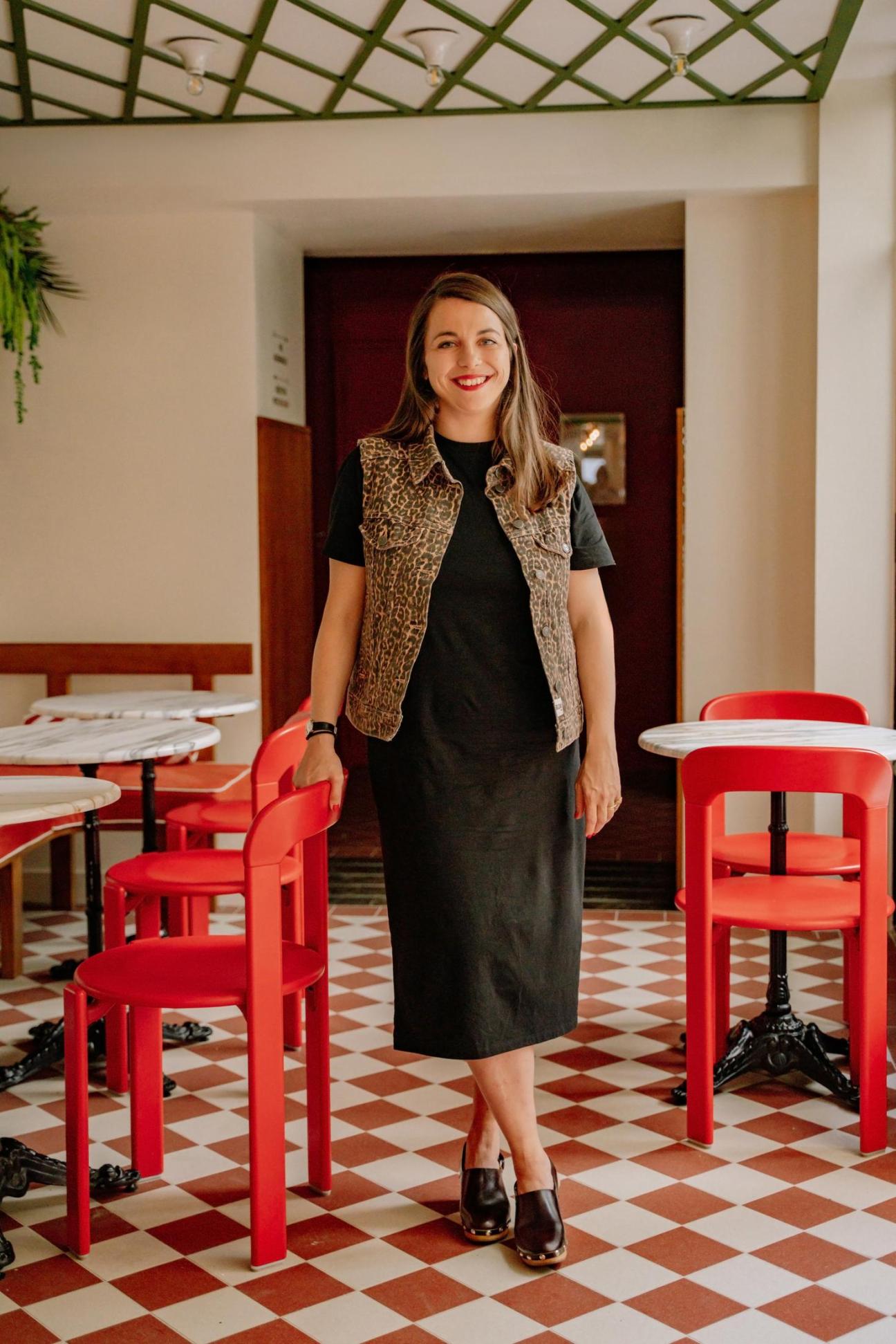
Stroll through Montmartre and you’re almost certain to spot a few flowers hanging from residents’ balconies. The recently opened Hôtel Dalila in Paris’s 18th arrondissement is fittingly floral. Its 49 rooms, breakfast area and workspaces were conceived by Bordeaux-based Giovanna de Bosredon (pictured) of Auguri Studio, who designed the seven-floor hotel to resemble a comfortably lived-in Paris apartment.
“Our work here was a combination of architecture, interior design and curating vintage pieces,” says De Bosredon. “Inside the hotel, the chequered tiles and caning are in Montmartre’s colour palettes: the green of its squares, the red of the wine and the orange of the famous Lapin-Agile cabaret.” Among the vintage pieces are a bistro bar made from zinc and metal lamps by French architect and designer Charlotte Perriand.

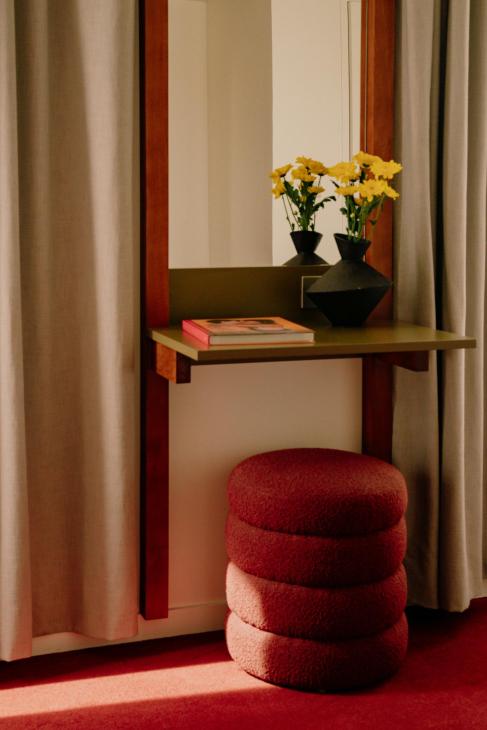
This mishmash of old-school elements is complemented by more modern Hay sconces, bold carpet colours and metal furniture that echoes the seats found in public parks. The finishing touch? A view of the Basilique du Sacré Coeur. Hôtel Dalila is a true neighbourhood gem. Bravo!
hoteldalila.com
Of all of Paris’s 20 arrondissements, perhaps the most vibrant and fastest changing are the twin neighbourhoods of Belleville and Jourdain. Once among the poorest parts of the French capital, they have become known for lively street markets, an eclectic mix of cuisines and tone-setting arts venues.
Today, the area’s Asian and North African communities rub shoulders with creatives searching for fresh opportunities and lower rents. Around Parc de Belleville, Chinese supermarkets and Tunisian tea salons vie with art galleries, natural-wine bars and the city’s best third-wave coffee shops (Paris’s less-than-stellar reputation for the beverage has long been a sore point). It’s a refreshingly well-integrated corner of the capital.
Venture towards Parc des Buttes Chaumont and you’ll find village-like Jourdain. Here, Haussmannian buildings mingle with low-rise structures and cobbled lanes, where apéros are sipped in the shadow of lime trees and the hustle of central Paris seems both easily accessible and worlds away.
1.
Read
Les Misérables
Victor Hugo’s novel captures the soul of 19th-century Paris and its residents. Belleville and Jourdain are the city’s grittiest districts in this tableau of stark social contrasts, in which the lower classes face poverty, neglect and exploitation. Pick up a copy from Le Genre Urbain, a well-stocked bookshop with an extensive foreign-language selection that might not have thrived in Jean Valjean’s day.

2.
Stay
Babel
It took a while for small, independent and reliable hotels to arrive in this area but there are now several fine options. The 31-key Babel, near Boulevard de Belleville, is one of them, featuring Berber-inspired décor, an eclectic restaurant and an in-house radio station.
babel-belleville.com

3.
See
The striking view of the city from Parc de Belleville
For one of the best views of the Eiffel Tower, head uphill to the top of Parc de Belleville. In the evening, the park attracts residents who come to watch the sun set behind the roofs of Paris. Afterwards, move on to one of the bars on Rue des Envierges, where things stay lively well into the night.

4.
Eat
Cheval d’Or
An unassuming 1980s Chinese takeaway façade belies one of the city’s most celebrated restaurants. Cheval d’Or stays true to its Asian roots and adds a little modern French bistronomy in dishes such as cockles in Provençal-style XO sauce and, to conclude, île flottante with black tea and tapioca pearls.
chevaldorparis.com

5.
Shop
Bokbar
Gothenburg transplant Natalie Magnusson opened Bokbar in 2022 to share her love for Swedish literature with the French capital. The bookshop’s wooden shelves are lined with translated works by Nordic authors that you can start reading at a table in the cosy on-site café.
bokbar.fr

6.
Drink
Soces
Jourdain’s Rue de la Villette resembles an entire neighbourhood condensed into a single street. From a friendly grocer to a quaint toy shop, you’ll find everything that you need and more. For an apéro, the go-to spot on the block is Socès. It serves glasses of crisp, sparkling Furlani and orange wines alongside just-shucked oysters. As the evening progresses, the menu expands to include more substantial dishes such as gratinated onion soup and tuna carpaccio.
soces.fr

7.
Buy
Harissa from Épicerie Le Caire
Though harissa, a much-loved staple of North African cuisine, is widely available in French supermarkets, nothing compares to the home-made version here. Prepared with red chilli, garlic and a closely guarded mix of herbs and spices, Épicerie Le Caire’s offering is fragrant, spicy and not for the faint of heart.

8.
Visit
Parc des Buttes Chaumont
In a city short on greenery, Buttes Chaumont is a welcome oasis. Once an industrial site, it was transformed into a public park in the 19th century by landscape architect Jean-Charles Alphand, under the guidance of town planner Georges-Eugène Haussmann. The result is a dreamlike garden with dramatic rock formations, a hilltop pavilion and lush lawns, all ideal for an autumn picnic.

9.
Order
A cortado at Candle Kids
In this once working-class district, a café such as Candle Kids would have been unimaginable even a few years ago. Across the street from a traditional PMU betting shop, the space represents a shift towards third-wave coffee culture, which Paris was initially slow to embrace. Come for the perfectly frothy cortados and stay for the interiors,with concrete finishes and custom-made wooden furniture by Studio Ebur.

10.
Don’t miss
Théâtre de Belleville
Parisians spend many an evening at their local theatre to engage with the latest plays by the country’s leading intellectuals. In a hall that dates back to 1850, the Théâtre de Belleville has hosted productions by acclaimed writers such as Léonore Confino and Laurent Gaudé. This a neighbourhood that knows how to put on a show.



